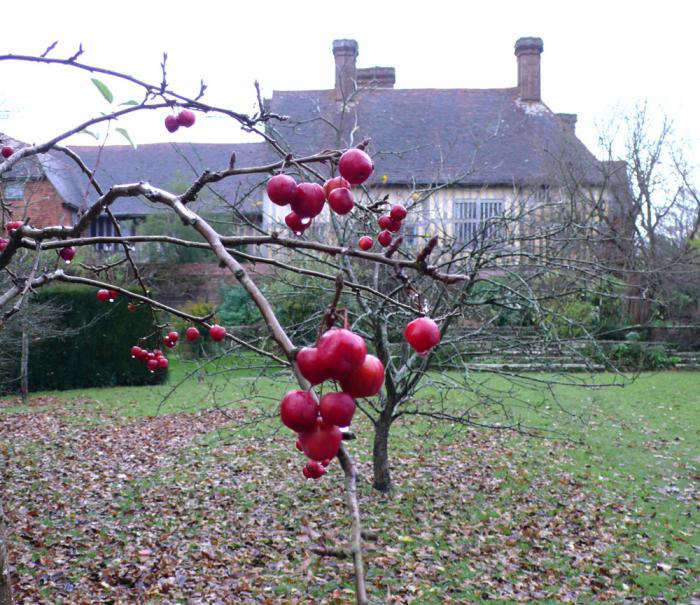

Photographs by Kendra Wilson for Gardenista.
Photographs by Kendra Wilson for Gardenista.
Great Dixter in East Sussex is a warm place. Along with a good number of trees, the house and garden are enclosed and protected and in turn Dixter throws its arms around people who work there and those who are lucky enough to visit.
Great Dixter in East Sussex is a warm place. Along with a good number of trees, the house and garden are enclosed and protected and in turn Dixter throws its arms around people who work there and those who are lucky enough to visit.
Malus baccata, in the orchard behind the house. In summer this is a meadow, with a narrow brick path threading through and there are more meadows at the front of the house.
Malus baccata, in the orchard behind the house. In summer this is a meadow, with a narrow brick path threading through and there are more meadows at the front of the house.
The ancient beauty of Great Dixter has human proportions and the “porch” is the perfect place for amassing pot plants. The house is a combination of great hall, (shown above) dating from around 1460, with a yeoman’s hall built just after.
The ancient beauty of Great Dixter has human proportions and the “porch” is the perfect place for amassing pot plants. The house is a combination of great hall, (shown above) dating from around 1460, with a yeoman’s hall built just after.
Hedges form narrow alleys by the front of the house.
Hedges form narrow alleys by the front of the house.
There are a lot of blackbirds hopping around at Great Dixter, and there are a lot of cotoneasters (shown here).
There are a lot of blackbirds hopping around at Great Dixter, and there are a lot of cotoneasters (shown here).
Without the distraction of the vibrant summer color so characteristic of Christopher Lloyd’s planting style, the Arts and Crafts garden is able to take center stage in the winter months.
Without the distraction of the vibrant summer color so characteristic of Christopher Lloyd’s planting style, the Arts and Crafts garden is able to take center stage in the winter months.
The shriveling and the browning of plants is balanced by much glistening red: in berries, fruit, and hips.
The shriveling and the browning of plants is balanced by much glistening red: in berries, fruit, and hips.
On the tiles of some of the low-roofed outbuildings or “hovels” and on the main house itself are sedums growing on a slant.
On the tiles of some of the low-roofed outbuildings or “hovels” and on the main house itself are sedums growing on a slant.
Freshly cut box shapes near the front door.
Freshly cut box shapes near the front door.
“Although they are patently on a larger scale than that of a true cottage garden, these planting schemes and the intimate atmosphere they create have a strong feel of the authentic about them,” he writes.
“Although they are patently on a larger scale than that of a true cottage garden, these planting schemes and the intimate atmosphere they create have a strong feel of the authentic about them,” he writes.
Planning a visit to East Sussex? The symposia, which occur throughout the year, offer a rare opportunity for a small group to learn traditional techniques in the borders of Great Dixter with head gardener Fergus Garrett and his team.
Planning a visit to East Sussex? The symposia, which occur throughout the year, offer a rare opportunity for a small group to learn traditional techniques in the borders of Great Dixter with head gardener Fergus Garrett and his team.